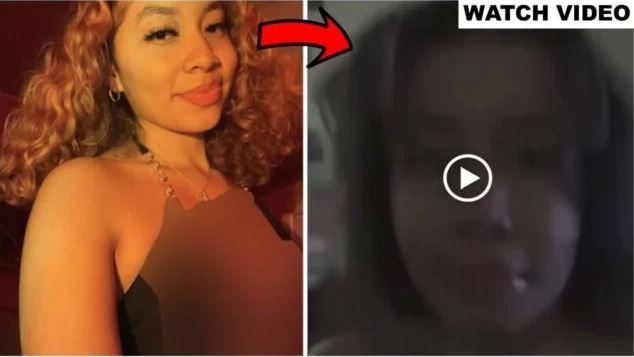When you think about 3D computer graphics, Maya often comes up. It's a really powerful software, you know, with so many different parts and capabilities. People often look for specific guides to help them with what they want to do, because the program is just that big. For anyone just starting out, there are some great learning materials available, and actually, I remember using one of these back when I first began my own journey with Maya.
Learning Maya can feel like quite a big task, especially if you want to get into the professional world. If you're just curious or have a strong hobby interest, then yes, you can definitely teach yourself and have fun with it. However, if your aim is to work in the industry, it's a bit harder to learn on your own; it usually needs a lot more effort and time. This program, you see, typically breaks down into big areas like making models, setting up materials and lights, and creating movement for characters.
It's funny, but the old talk about Maya versus 3ds Max still pops up, doesn't it? As a matter of fact, this discussion has been going on since about 2002, appearing on various well-known CG forums. People would often get into pretty heated debates over which software was better. Today, in 2024, both tools have their unique strengths, and picking one often depends on what kind of work you plan to do, or what kind of industry you want to be a part of, so it's not really about one being "better" than the other anymore.
Table of Contents
- Getting Started with Maya: Your First Steps
- Different Sides of Maya: What It Does
- Maya in the Bigger Picture: Comparisons and Industry Use
- Handling Maya: Practical Tips
- Finding Your Tools: Models and Resources
- Frequently Asked Questions About Maya
Getting Started with Maya: Your First Steps
Starting with a powerful tool like Maya can feel a bit overwhelming, to be honest. It's a program that packs a lot of punch, with many different parts that do different things. For new users, figuring out where to begin is often the first big question. Luckily, there are ways to approach this, and getting the right guidance can make all the difference, you know.
Finding Good Learning Guides
To truly get a handle on Maya, finding a good learning guide is pretty important. For instance, when I first started, I found the "Maya 2013 Comprehensive Learning Manual" from Digital-Tutors to be really helpful. This particular guide, you see, had Chinese subtitles available online, which made it much easier to follow along. Having a clear, step-by-step resource like this can really help you understand the core concepts and build a strong foundation in the software.
It's interesting how specific guides can make such a difference, isn't it? Because Maya has so many modules, people usually look for guides based on what they specifically need to learn. Whether it's for animation, modeling, or something else, there's often a guide out there that focuses just on that. This targeted approach, in a way, helps people avoid getting lost in the vastness of the software, allowing them to pick up skills more effectively.
Can You Teach Yourself Maya?
If you're just dabbling in Maya out of pure interest, then yes, you can absolutely teach yourself and have a good time with it. It's perfectly fine to explore and play around with the features at your own pace. However, if your goal is to truly enter the professional world of 3D, learning Maya on your own can be quite a challenge, requiring a lot more time and focused effort. It's a bit like learning a complex instrument; you can strum a few chords on your own, but becoming a concert performer often needs dedicated instruction.
The complexity of Maya means that self-teaching for a career path is, in some respects, harder than for a hobby. The industry expects a certain level of skill and efficiency that often comes from structured learning or working with others. While passion helps, getting a solid grip on the professional aspects of Maya means understanding not just how to use the tools, but also industry workflows and best practices, which can be tough to pick up without guidance, you know.
Different Sides of Maya: What It Does
Maya is known for its wide range of uses in the 3D world. It's not just one tool, but rather a collection of many different tools that work together. This means it can be used for various parts of creating digital art and animations. Generally speaking, the software is divided into a few main areas, each with its own set of functions and techniques, which is pretty neat.
Creating Models and Adding Looks
One of the main "buckets" of Maya is modeling. This is where you build the actual 3D shapes and objects, whether they are characters, props, or environments. After you've built your models, the next step usually involves giving them their visual appeal. This means working with materials and lighting. You apply different textures and surfaces to your models, making them look like wood, metal, skin, or anything else you can imagine. Then, you set up lights to illuminate your scene, giving it depth and mood.
This part of Maya is quite important for the overall look of any 3D project. Getting the materials and lighting just right can really make a model come to life, or so it seems. It's where the technical side meets the artistic side, allowing creators to paint with light and texture. Without proper attention to these details, even the best models can appear flat or uninteresting, you know.
Bringing Characters to Life
Another big area within Maya is animation. This is where you make your models move and perform. For films, games, and other visual media, Maya is quite a strong choice if you have many 3D characters in your project. It offers powerful tools for rigging characters, which means setting up their internal "skeletons" so they can be posed and animated smoothly. Once rigged, animators can then bring characters to life, making them walk, talk, and express emotions.
While Maya is a top choice for character work, other programs like C4D and 3ds Max can also handle character tasks, to be fair. However, Maya has a long history and deep capabilities specifically for complex character setups and animation pipelines. This focus, in a way, has made it a favorite for many studios that produce character-heavy content, which is pretty cool.
Maya in the Bigger Picture: Comparisons and Industry Use
Maya doesn't exist in a vacuum; it's part of a bigger world of 3D software. People often compare it to other programs, and it has a long history of being used in some of the biggest production houses. Understanding its place among other tools and its history in the industry gives you a better idea of its strengths and where it fits in, you know.
Maya Versus Max: An Old Discussion
As I mentioned earlier, the talk about who is better, Maya or 3ds Max, has been around for a very long time. It started back in 2002 on various CG forums, and people would often argue about it quite passionately. While 3ds Max has a lot of resources available and a somewhat complex structure, it has also improved its connection with Adobe After Effects since its 2013 version. This integration, you see, can be a big plus for some workflows.
The debate, in some respects, highlights how different tools suit different needs. Maya came onto the scene a bit later than some others, and its learning cycle is generally longer, with more content to learn. Back in 2010, when I started learning Maya, it was almost entirely in English for about four years, while 3ds Max already had Chinese versions available. This difference in accessibility and learning curve was a big factor for many users, and it still is, you know.
Maya's Place in Big Studios
When you look at the really big production companies, like Industrial Light & Magic or Weta Digital, Maya has been their go-to tool for a very long time. These companies have been using Maya for over 20 years, and they've also spent those years building up their own custom tools and workflows around it, based on their project needs. This long history and deep investment mean that Maya has a very strong presence in top-tier studios.
The difference between Blender and Maya, especially, is quite noticeable in terms of their historical development. Maya got its start much earlier, allowing these major companies to accumulate years of development experience and custom solutions. When you join a team that has used Maya for decades, you're stepping into a system that has been refined and expanded over a long period, which is pretty significant. This kind of established pipeline is a big reason why Maya remains a cornerstone in major film and animation houses, you know.
Handling Maya: Practical Tips
Working with any powerful software means you'll eventually run into some practical matters, like installing it, dealing with issues, or getting your work ready for others to see. Maya is no different, and knowing a few tricks for these common situations can save you a lot of headaches, so it's good to be prepared.
Making Sure Maya Comes Off Your Computer
Sometimes you need to take Maya off your computer, maybe to install a newer version or just to clean things up. The first step is to go to your computer's control panel and find the "uninstall a program" option. If the program isn't removed completely, you won't be able to install it again properly. This is a common issue, actually, that can stop you from getting a fresh installation going.
To make sure it's completely gone, you need to find the specific version you want to remove in the program list. While you wait for the uninstall process, you should also try to find the files that were created when you first installed the software. These are often self-extracting files, and sometimes remnants from them can cause problems later on. Removing all previous installation information, you see, is key to a successful re-installation. If you've previously installed other products from Autodesk, the company that makes Maya, their registration information might still be there, which can also cause issues during a new installation. You have to make sure all that old data is gone to install it again without trouble, you know.
Solving Common Issues, Like UVs
Even with all its power, Maya can sometimes present little puzzles, like when your model's UVs don't show up correctly in another program. For instance, if you've arranged the UVs on a model in Maya, but then you bring that model into Substance Painter and only see one UV, which is the default circular one from Maya, that can be a bit frustrating. This means the program isn't reading your custom UV layout.
This kind of problem usually points to something in the export or import process not quite lining up. You need to check the export settings in Maya to make sure the UV information is being included properly, and then also check the import settings in the other software. Sometimes, it's a simple checkbox or a setting that needs to be adjusted. Making sure your UVs are correctly prepared and transferred is pretty important for applying textures accurately in other programs, you know.
Getting Your Videos Ready
When you want to play a preview of your work from Maya using H.264 encoding, you need to have QuickTime installed on your computer. This is a specific requirement for that particular video format. You can easily find QuickTime by searching for it in your web browser and then going to the official QuickTime website to download QuickTime 7.
Having the right codecs and players is, in some respects, a small but important detail for smooth workflow. Without QuickTime, Maya might not be able to create or play back H.264 previews, which can slow down your review process. So, it's a good idea to make sure you have it installed if you plan on using that type of video output from Maya, you know.
Finding Your Tools: Models and Resources
Beyond the software itself, having access to a good collection of 3D models and other resources can greatly speed up your work. There are many places online where you can find these assets, and knowing where to look is a big part of being efficient in your projects.
For example, a site like AssetOvi is a fantastic place to find 3D models. It collects over two million 3D models from several popular asset stores, including Sketchfab and Unity Asset Store. This means you can find models from many different sources all in one spot, which is really convenient. Before you download, you can also often get a preview of the model, which helps you decide if it's the right fit for your project. This kind of resource, you know, can save artists a lot of time by providing ready-made elements for their scenes. Learn more about Maya on our site, and check out our other useful information here.
Frequently Asked Questions About Maya
People often have similar questions when they're learning about or working with Maya. Here are some common ones that might help you out, you know.
Is Maya hard to learn if I want to work in the industry?
Yes, if you aim to truly enter the industry, learning Maya on your own is relatively difficult. It needs more effort and time compared to just exploring it as a hobby. Professional use often requires a deeper understanding of its many modules and workflows, which can be tough to master without structured guidance, so it seems.
How do I completely uninstall Maya from my computer?
You start by going to the control panel and selecting "uninstall a program." If it's not fully removed, you won't be able to reinstall it. You need to find the specific version to uninstall and also check for any self-extracting files from the original installation to ensure all previous setup information is gone. This is pretty important for a clean reinstallation.
Why might my Maya model's UVs not show up in Substance Painter?
If your Maya model's UVs don't show up in Substance Painter, and you only see a default circular UV, it usually means there's an issue with how the UV information was exported from Maya or imported into Substance Painter. You should check your export settings in Maya to make sure UVs are included, and then verify the import settings in Substance Painter to ensure it's reading them correctly, which is a good troubleshooting step.
For more official information about Maya, you can visit Autodesk's website.



Detail Author:
- Name : Leanna Hettinger
- Username : haley.rasheed
- Email : rauer@hotmail.com
- Birthdate : 1994-05-18
- Address : 56110 Feeney Estate Apt. 515 Rennerview, LA 12347
- Phone : 435.805.8321
- Company : Lebsack-Wisozk
- Job : Nuclear Technician
- Bio : Exercitationem et velit et quam culpa id. Sed hic at ipsum odit. Eaque officia maxime ut laborum sit iusto.
Socials
facebook:
- url : https://facebook.com/zemlak2012
- username : zemlak2012
- bio : Commodi hic et nemo molestias. Temporibus ut explicabo voluptate rerum.
- followers : 867
- following : 1755
twitter:
- url : https://twitter.com/camren_official
- username : camren_official
- bio : Qui dolorem labore adipisci sint nostrum. Totam inventore itaque ipsam voluptatem quis. Eum consequatur illum qui voluptate in.
- followers : 4370
- following : 2180